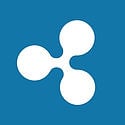Over the last year, the dollar saw an extended period of strength, but turned around in autumn. Although there were many events to influence that trajectory, the main overriding theme has been the Fed. And as we turn our attention to the new year, it appears that will be the main driver going forward, as well. And not just the dollar, as risk sentiment could have some significant fluctuations over the coming months.
What's expected
There remains a discrepancy between what the market expects the Fed to do, and what the Fed says it will do. Fed officials have repeatedly said that rate hikes will continue. But the market is pricing in a terminal rate of under 5.0%. That implies at most two more hikes in the coming year, a significantly slower pace than what has been happening so far.
The first quarter is the moment of truth, to find out whether the Fed stays true to its implication that rates will be higher than the markets are expecting. The economic situation might be significantly different in the coming months, which could change the Fed's position. It's not that the market thinks the Fed is being dishonest, it's that the market thinks the Fed is being too optimistic about the economy.
Two roads diverged in a yellow wood
Everyone seems to agree that there will be some kind of slowdown in the US at the start of the next year. The issue is whether it will be severe enough to knock the Fed off its rate trajectory. Or, will the slower economic activity pull inflation down faster than expected. So far, headline inflation has come in below expectations by quite a lot over the last few months. But core inflation has been a little more "sticky".
Slower economic activity would imply less demand for crude, and energy has been one of the leading factors pushing the difference between core and headline CPI. A more mild winter and a diffusion of geopolitical tensions could help reduce inflation faster than anticipated. Combined with an underperforming economy, the Fed could have every reason to not only stop hiking, but to retrace its steps. Less risk outlook and a dovishly inclined Fed could significantly weaken the dollar over time.
The path less taken
The consensus among economists is that there will be a relatively mild and short recession in the early part of the year, followed by a slow recovery. That considers a Fed keeping rates tight, and aggressively winding off its balance sheet. That represents the scenario that could weaken the dollar initially, but generally remain strong through the year, thanks to higher interest rates.
The divergent opinion is that there won't be a recession at all, and the US will power through on good employment figures and increased government spending. That means inflation could remain elevated, and the Fed might not be as aggressive in raising rates. This scenario implies that the dollar will weaken in the early part of the year and simply continue its trend.
Check back in twelve months to see who was right.
This market forecast is for general information only. It is not an investment advice or a solution to buy or sell securities.
Authors' opinions do not represent the ones of Orbex and its associates. Terms and Conditions and the Privacy Policy apply.
Trading foreign exchange on margin carries a high level of risk, and may not be suitable for all investors. Before deciding to trade foreign exchange, you should carefully consider your investment objectives, level of experience, and risk appetite. There is a possibility that you may sustain a loss of some or all of your investment and therefore you should not invest money that you cannot afford to lose. You should be aware of all the risks associated with foreign exchange trading, and seek advice from an independent financial advisor if you have any doubts.
Recommended Content
Editors’ Picks
EUR/USD regains traction, recovers above 1.0700

EUR/USD regained its traction and turned positive on the day above 1.0700 in the American session. The US Dollar struggles to preserve its strength after the data from the US showed that the economy grew at a softer pace than expected in Q1.
GBP/USD returns to 1.2500 area in volatile session

GBP/USD reversed its direction and recovered to 1.2500 after falling to the 1.2450 area earlier in the day. Although markets remain risk-averse, the US Dollar struggles to find demand following the disappointing GDP data.
Gold holds around $2,330 after dismal US data

Gold fell below $2,320 in the early American session as US yields shot higher after the data showed a significant increase in the US GDP price deflator in Q1. With safe-haven flows dominating the markets, however, XAU/USD reversed its direction and rose above $2,340.
XRP extends its decline, crypto experts comment on Ripple stablecoin and benefits for XRP Ledger

Ripple extends decline to $0.52 on Thursday, wipes out weekly gains. Crypto expert asks Ripple CTO how the stablecoin will benefit the XRP Ledger and native token XRP.
After the US close, it’s the Tokyo CPI

After the US close, it’s the Tokyo CPI, a reliable indicator of the national number and then the BoJ policy announcement. Tokyo CPI ex food and energy in Japan was a rise to 2.90% in March from 2.50%.